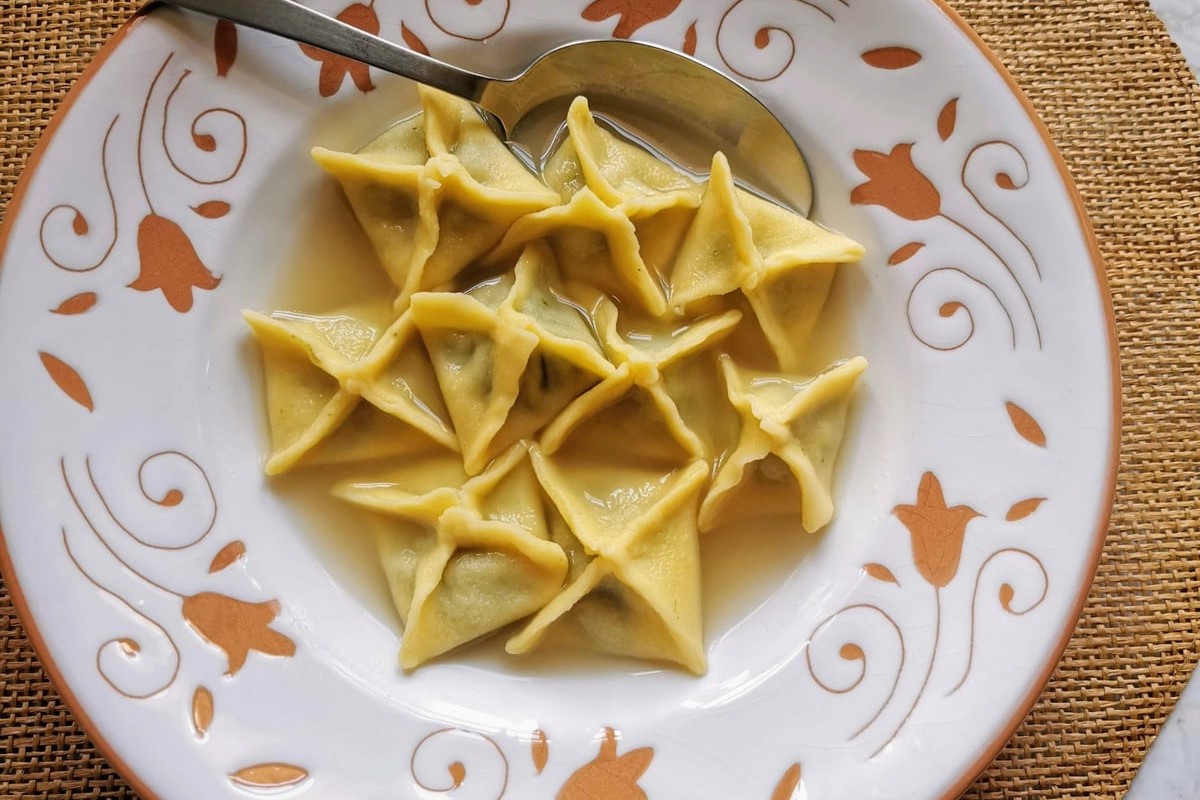
Fagottini might sound like a fancy dish you'd find in a high-end restaurant, but it's actually a delightful type of pasta. Shaped like little bundles or purses, these pasta pockets are often filled with delicious ingredients like cheese, vegetables, or even meat. Originating from Italy, fagottini has a rich history and a unique place in Italian cuisine. Whether you're a pasta enthusiast or just curious about different types of food, learning about fagottini can be both fun and mouth-watering. But what makes fagottini special? Let's dive into 25 fascinating facts about this charming pasta that will leave you craving a taste!
What is Fagottini?
Fagottini, a type of Italian pasta, translates to "little bundles" in English. These small, stuffed pasta parcels are often filled with a variety of delicious ingredients. Let's dive into some fascinating facts about this unique pasta.
-
Fagottini is traditionally made by wrapping pasta dough around a filling, then twisting it to form a small bundle.
-
The name "fagottini" comes from the Italian word "fagotto," meaning bundle or package.
-
Common fillings include cheese, vegetables, and meats, making each bite a flavorful experience.
-
Fagottini is often served with light sauces to complement the delicate flavors of the filling.
The History of Fagottini
Understanding the origins of fagottini can give us a deeper appreciation for this delightful pasta.
-
Fagottini originated in Italy, where pasta-making has been a cherished tradition for centuries.
-
The pasta was initially created as a way to use up leftover ingredients, making it a practical and delicious solution.
-
Over time, fagottini evolved into a gourmet dish, often featured in high-end Italian restaurants.
-
Each region in Italy has its own variation of fagottini, showcasing local ingredients and culinary traditions.
How Fagottini is Made
The process of making fagottini is both an art and a science, requiring skill and precision.
-
Fresh pasta dough is rolled out into thin sheets, which are then cut into small squares.
-
A dollop of filling is placed in the center of each square before the dough is folded and twisted into a bundle.
-
The edges of the dough are carefully sealed to prevent the filling from leaking out during cooking.
-
Fagottini is typically boiled until al dente, ensuring a perfect texture.
Popular Fagottini Fillings
The filling is what makes fagottini truly special. Here are some popular options:
-
Ricotta and spinach is a classic filling, offering a creamy and slightly tangy flavor.
-
Pumpkin and sage is a popular autumnal filling, providing a sweet and savory combination.
-
Prosciutto and cheese is a rich and indulgent option, perfect for meat lovers.
-
Mushroom and truffle is a luxurious filling, often found in gourmet versions of fagottini.
Serving Suggestions for Fagottini
How you serve fagottini can elevate the dining experience. Here are some ideas:
-
A simple butter and sage sauce allows the flavors of the filling to shine.
-
A light tomato sauce adds a touch of acidity, balancing the richness of the filling.
-
A drizzle of truffle oil can add an extra layer of luxury to the dish.
-
Freshly grated Parmesan cheese is a must-have topping for any fagottini dish.
Fun Facts About Fagottini
Let's explore some interesting tidbits about fagottini that you might not know.
-
Fagottini is sometimes referred to as "beggar's purses" due to their small, pouch-like shape.
-
In some regions of Italy, fagottini is a traditional dish served during special occasions and holidays.
-
The pasta can be made in advance and frozen, making it a convenient option for busy cooks.
-
Fagottini can be baked in a casserole with sauce and cheese for a comforting, hearty meal.
-
Some chefs experiment with unconventional fillings, such as seafood or even sweet ingredients like chocolate and fruit for dessert versions.
The Final Note on Fagottini
Fagottini, with its unique shape and delightful fillings, is a true gem in the world of pasta. Whether stuffed with cheese, vegetables, or meats, this pasta offers a versatile and delicious option for any meal. Its origins may be rooted in Italy, but its appeal is universal. From its name, which means "little bundles," to its intricate preparation, fagottini showcases the artistry and tradition of Italian cuisine.
Cooking fagottini can be a fun and rewarding experience, allowing you to experiment with different ingredients and flavors. Whether you're a seasoned chef or a home cook, this pasta is sure to impress your family and friends. So next time you're in the mood for something special, give fagottini a try. It's more than just a meal; it's a culinary adventure waiting to be explored. Enjoy every bite!
Was this page helpful?
Our commitment to delivering trustworthy and engaging content is at the heart of what we do. Each fact on our site is contributed by real users like you, bringing a wealth of diverse insights and information. To ensure the highest standards of accuracy and reliability, our dedicated editors meticulously review each submission. This process guarantees that the facts we share are not only fascinating but also credible. Trust in our commitment to quality and authenticity as you explore and learn with us.
